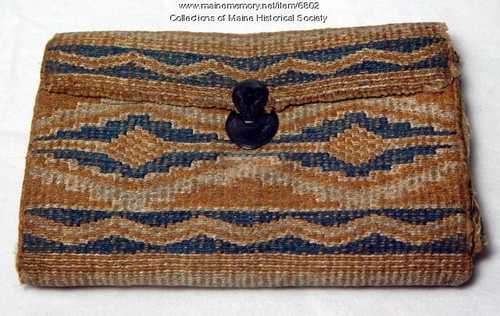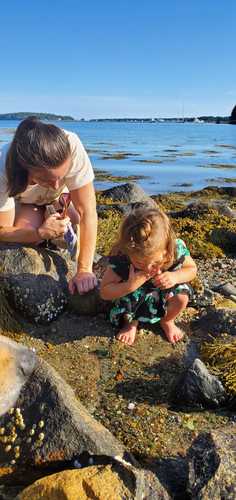Keywords: settler
Item 18513
Daniel C. Libby, Amity, ca. 1900
Contributed by: Aroostook County Historical and Art Museum Date: circa 1900 Location: Amity Media: Photographic print
Item 18448
B. B. Chandler, Aroostook County, ca. 1888
Contributed by: Aroostook County Historical and Art Museum Date: 1888 Media: Photographic print
Item 151671
Lewis Chase cottage on Squirrel Island, Southport, ca. 1900
Contributed by: Maine Historical Society
Date: circa 1900
Location: Southport
Client: Lewis Chase
Architect: John Calvin Stevens
This record contains 3 images.
Item 151335
The Checkley House, Scarborough, 1895
Contributed by: Maine Historical Society Date: circa 1895 Location: Scarborough Client: unknown Architect: John Calvin Stevens
Exhibit
Father Rasles, the Indians and the English
Father Sebastien Rasle, a French Jesuit, ran a mission for Indians at Norridgewock and, many English settlers believed, encouraged Indian resistance to English settlement. He was killed in a raid on the mission in 1724 that resulted in the remaining Indians fleeing for Canada.
Exhibit
Holding up the Sky: Wabanaki people, culture, history, and art
Learn about Native diplomacy and obligation by exploring 13,000 years of Wabanaki residence in Maine through 17th century treaties, historic items, and contemporary artworks—from ash baskets to high fashion. Wabanaki voices contextualize present-day relevance and repercussions of 400 years of shared histories between Wabanakis and settlers to their region.
Site Page
Mount Desert Island: Shaped by Nature - More Permanent Settlers Arrive
"More Permanent Settlers Arrive Two major waves of settlers arrived after 1768 – the first from Gloucester, Massachusetts in addition to James…"
Site Page
Mount Desert Island: Shaped by Nature - …then came the settlers…
"…then came the settlers… Granite mountains, Mount Desert, 1837Maine Historical Society While exploring Mount Desert as a place “to carry on…"
Story
Mali Agat (Molly Ockett) the famous Wabanaki "Doctress"
by Maine Historical Society
Pigwacket Molly Ockett, healing, and cultural ecological knowledge
Story
Rematriation
by Alivia Moore
Our shared future for all people in Wabanakiyik calls us to rematriate.
Lesson Plan
Grade Level: 9-12
Content Area: Social Studies, Visual & Performing Arts
When European settlers began coming to the wilderness of North America, they did not have a vision that included changing their lifestyle. The plan was to set up self-contained communities where their version of European life could be lived. In the introduction to The Crucible, Arthur Miller even goes as far as saying that the Puritans believed the American forest to be the last stronghold of Satan on this Earth. When Roger Chillingworth shows up in The Scarlet Letter's second chapter, he is welcomed away from life with "the heathen folk" and into "a land where iniquity is searched out, and punished in the sight of rulers and people." In fact, as history's proven, they believed that the continent could be changed to accommodate their interests. Whether their plans were enacted in the name of God, the King, or commerce and economics, the changes always included and still do to this day - the taming of the geographic, human, and animal environments that were here beforehand.
It seems that this has always been an issue that polarizes people. Some believe that the landscape should be left intact as much as possible while others believe that the world will inevitably move on in the name of progress for the benefit of mankind. In F. Scott Fitzgerald's The Great Gatsby a book which many feel is one of the best portrayals of our American reality - the narrator, Nick Carraway, looks upon this progress with cynicism when he ends his narrative by pondering the transformation of "the fresh green breast of a new world" that the initial settlers found on the shores of the continent into a modern society that unsettlingly reminds him of something out of a "night scene by El Greco."
Philosophically, the notions of progress, civilization, and scientific advancement are not only entirely subjective, but also rest upon the belief that things are not acceptable as they are. Europeans came here hoping for a better life, and it doesn't seem like we've stopped looking. Again, to quote Fitzgerald, it's the elusive green light and the "orgiastic future" that we've always hoped to find. Our problem has always been our stoic belief system. We cannot seem to find peace in the world either as we've found it or as someone else may have envisioned it. As an example, in Miller's The Crucible, his Judge Danforth says that: "You're either for this court or against this court." He will not allow for alternative perspectives. George W. Bush, in 2002, said that: "You're either for us or against us. There is no middle ground in the war on terror." The frontier -- be it a wilderness of physical, religious, or political nature -- has always frightened Americans.
As it's portrayed in the following bits of literature and artwork, the frontier is a doomed place waiting for white, cultured, Europeans to "fix" it. Anything outside of their society is not just different, but unacceptable. The lesson plan included will introduce a few examples of 19th century portrayal of the American forest as a wilderness that people feel needs to be hesitantly looked upon. Fortunately, though, the forest seems to turn no one away. Nature likes all of its creatures, whether or not the favor is returned.
While I am not providing actual activities and daily plans, the following information can serve as a rather detailed explanation of things which can combine in any fashion you'd like as a group of lessons.
Lesson Plan
Grade Level: 6-8, 9-12, Postsecondary
Content Area: Science & Engineering, Social Studies
This lesson presents an overview of the history of the fur trade in Maine with a focus on the 17th and 18th centuries, on how fashion influenced that trade, and how that trade impacted Indigenous peoples and the environment.
















